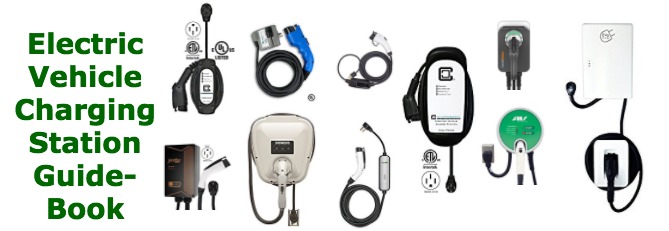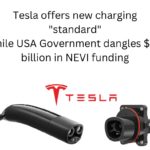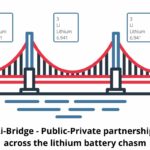The Tesla Model 3 is due for its production launch in a few months. While some of us are pondering our personal budget, Tesla Motors has a bigger issue on its mind. The key advantage they have over other automakers is the extensive reach of the Supercharger fast charging network. GM may have first mover status with an affordable 200+ mile range electric car, but any long-range electric car is nothing without a matching fast charging network. GM is failing to support development of fast charging infrastructure, while Tesla Motors is doubling down on their fast charging commitment. And, they’re going much further, by delivering on a promise made of solar power and electricity storage at Supercharger facilities.
The reason is clear once one understands the autonomy benefits of fast charging![]() . Fast charging gives a higher effective trip speed
. Fast charging gives a higher effective trip speed![]() and therefore makes proper road trips possible.
and therefore makes proper road trips possible.
In a short period, the Tesla Model 3 launch means more electric car drivers demanding access to the Supercharger network. In some areas that network is already overcrowded. In order to keep the customers happy, Tesla has to expand the network, with the practical result of increasing the number of charging stalls.

But, Tesla Motors is teasing us with much more. What’s shown here is the vision Elon Musk unveiled years ago, that the Supercharger network would be powered with solar electricity and energy storage units. That they would provision enough of both so the network could operate even if the electricity grid goes down.
What we see here is a larger Supercharger facility than Tesla currently builds. That has solar panels, and includes a modest sized building whose purpose we can guess at. Namely – a 30-60 minute dwell time means drivers need something to do, and so far Tesla has targeted Superchargers co-located with other attractions like restaurants. Perhaps Tesla will offer their own coffee shop service in the building shown here?
Secondly, there’s the need for on-site energy storage to buffer electricity demand. I’ve written before about the ideal recharging facility of the future, and this is very close to that idea.
The bottom line is a facility such as this would easily require 2 megaWatts (or more) when all stalls are operating at full capacity. By anybody’s measure that’s a lotta electricity. In Tesla’s information release![]() , the goal is described as: “Tesla will build larger sites along our busiest travel routes that will accommodate several dozen Teslas Supercharging simultaneously.” How many megaWatts is required to simultaneously offer that many 130+ kiloWatt charging sessions?
, the goal is described as: “Tesla will build larger sites along our busiest travel routes that will accommodate several dozen Teslas Supercharging simultaneously.” How many megaWatts is required to simultaneously offer that many 130+ kiloWatt charging sessions?
The solar panels will help to mitigate the electricity demand — during the day. To mitigate the demand throughout the day requires an energy storage system. And, this is not a coincidence, Tesla Motors is building a battery Gigafactory that makes exactly that kind of energy storage system.
Once Tesla Motors has deployed solar and energy storage across the country, those facilities could do more than just offer electric car charging services. There’s all kinds of grid services they could perform.
Tesla Motors had talked about this model back in May 2013, when Elon Musk tweeted about how the Supercharger network would be designed to survive the Zombie Apocalypse. He’s such a geek. But, despite the geek reference, THIS is what he discussed at that time, Supercharger’s colocated with energy storage and solar panels.
- Is there enough Grid Capacity for Hydrogen Fuel Cell or Battery Electric cars? - April 23, 2023
- Is Tesla finagling to grab federal NEVI dollars for Supercharger network? - November 15, 2022
- Tesla announces the North American Charging Standard charging connector - November 11, 2022
- Lightning Motorcycles adopts Silicon battery, 5 minute charge time gives 135 miles range - November 9, 2022
- Tesla Autopilot under US Dept of Transportation scrutiny - June 13, 2022
- Spectacular CNG bus fire misrepresented as EV bus fire - April 21, 2022
- Moldova, Ukraine, Georgia, Russia, and the European Energy Crisis - December 21, 2021
- Li-Bridge leading the USA across lithium battery chasm - October 29, 2021
- USA increasing domestic lithium battery research and manufacturing - October 28, 2021
- Electrify America building USA/Canada-wide EV charging network - October 27, 2021














